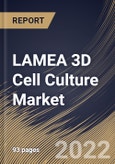Spheroids are a sort of three-dimensional cell modeling that simulates the environment of a living cell more accurately than two-dimensional cell models, particularly in terms of the interactions between cells and the interactions between cells and the matrix. Spheroids are valuable for studying the changing physiological features of cells, the structural difference between healthy and cancerous cells, and the changes that occur in cells during tumor formation.
Spheroids co-cultured containing tumors along with healthy cells were utilized to imitate the interaction between malignant and healthy cells. Spheroids can also be co-cultured with fibroblasts to simulate the interaction between tumors and stroma. Multiple ways exist for cultivating spheroids. To mass-produce spheroid cultures, it is customary to employ low cell adhesion plates, often a 96-well plate, where the aggregates develop in the curved bottom of the cell plates.
Alternatively, spheroids can be cultivated using the hanging drop technique, which involves the formation of cell aggreahey are in constant free fall and creates aggregates and layers is also under consideration. Recently, standardized techniques for producing consistent and reliable spheroids have been developed. Researchers had also investigated standard, cost-effective, and reproducible 3D cell culture methods.
There are a number of underdeveloped countries in the region, whose governments are strengthening their efforts to bring about fresh growth opportunities. In regional nations, such as South Africa and Brazil, the demand for innovative and more efficient pharmaceutical services and technology is consistently growing. Due to this, numerous researchers are implementing a 3D cell culture approach in order to address the region's expanding demand.
The Brazil market dominated the LAMEA 3D Cell Culture Market by Country in 2021, and would continue to be a dominant market till 2028; thereby, achieving a market value of $54.8 million by 2028. The Argentina market is experiencing a CAGR of 20.3% during (2022-2028). Additionally, The UAE market would display a CAGR of 19.4% during (2022-2028).
Based on Type, the market is segmented into Scaffold-based, Scaffold-free, Microfluidics-based, and Magnetic & Bioprinted. Based on Application, the market is segmented into Cancer & Stem Cell Research, Drug Discovery & Toxicology Testing, and Tissue Engineering & Regenerative Medicine. Based on End-user, the market is segmented into Pharmaceutical & Biotechnology Companies, Research Institutes, Cosmetic Industry, and Others. Based on countries, the market is segmented into Brazil, Argentina, UAE, Saudi Arabia, South Africa, Nigeria, and Rest of LAMEA.
The market research report covers the analysis of key stake holders of the market. Key companies profiled in the report include Microsoft Corporation, Nvidia Corporation, IBM Corporation, Intel Corporation, Google LLC, Siemens Healthineers AG (Siemens AG), General Electric (GE) Co. (GE Healthcare), Xilinx, Inc., Digital Diagnostics, Inc. and InformAI, LLC.
Scope of the Study
By Type
- Scaffold-based
- Scaffold-free
- Microfluidics-based
- Magnetic & Bioprinted
By Application
- Cancer & Stem Cell Research
- Drug Discovery & Toxicology Testing
- Tissue Engineering & Regenerative Medicine
By End-user
- Pharmaceutical & Biotechnology Companies
- Research Institutes
- Cosmetic Industry
- Others
By Country
- Brazil
- Argentina
- UAE
- Saudi Arabia
- South Africa
- Nigeria
- Rest of LAMEA
Key Market Players
List of Companies Profiled in the Report:
- Thermo Fisher Scientific, Inc.
- Merck Group
- Avantor, Inc.
- Corning Incorporated
- Lonza Group AG
- Mimetas B.V.
- Insphero AG
- Emulate, Inc.
- Tecan Group Ltd.
- CN Bio Innovations Ltd.
Unique Offerings
- Exhaustive coverage
- The highest number of Market tables and figures
- Subscription-based model available
- Guaranteed best price
- Assured post sales research support with 10% customization free
Table of Contents
Companies Mentioned
- Thermo Fisher Scientific, Inc.
- Merck Group
- Avantor, Inc.
- Corning Incorporated
- Lonza Group AG
- Mimetas B.V.
- Insphero AG
- Emulate, Inc.
- Tecan Group Ltd.
- CN Bio Innovations Ltd.








